Classic Aerobatic Designs Plans Repository
We have now compiled a list and downloadable links for plans for a number of Classic Aerobatic designs.
You can access them from here: PLANIOGRAPHY
Classic Aerobatic Articles
We have also compiled a list of downloadable articles for a number of Classic Aerobatic designs.
You can access them from here: ARTICLES
Model Options
Take a look at Steve Burgess’ Challenger design, designed for 61 two-stroke power, simple to build and not requiring a large estate car to transport it around. Steve’s example used a Super Tigre 61, an excellent example of the period in that a potential competition modeller could obtain one of these from their local model shop. The choice of servos allowed an equally economic build. This is among a group of plans still available from the RCM&E plans range.
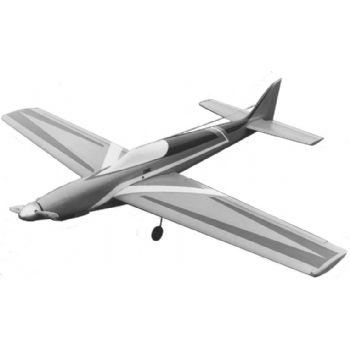
Steve Burgess Challenger
So there you have it, a highly competitive model that could be put together for a few hundred pounds and provide everything that a pilot needed to be successful providing that they had the skill. At the other end of the complexity scale was Hanno Prettner's 1982 World Championship Winning Magic. In addition to the traditional four functions, this model also had in flight mixture control, a variable pitch propellor (very rare), air brakes, flaps and retractable undercarriage.

(image credit Sam Wragg - Magic)
Hanno Prettner Magic
Moving back into the seventies, some classic designs emerged during this period. We have the Atlas and Arrow from the Wolfgang Matt stable, Super Sicroly and Curare from multiple World Champion, Hanno Prettner.
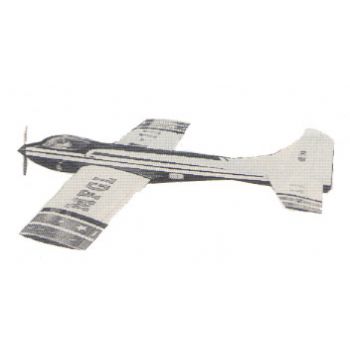
Wolfgang Matt Atlas
The Curare must be the most popular F3A model that has ever been built. The early eighties provided the potential builder the chance to put one together from a glassfibre fuselage and foam wing package that was available from several modelling outlets at that time.

(Andy Green - Curare)
Hanno Prettner Curare
Bringing the design into the 21st Centuary, we now have an artf version in original colour scheme that can be powered by both I.C. and electric. In fact, provision has been made to be able to switch from one propulsion method to another due to the fact that the same mounting dimensions are used.
These models are available from Modellsport Schweighofer (www.der-schweighofer.at) with a price tag of approximately 320 euros plus carriage.
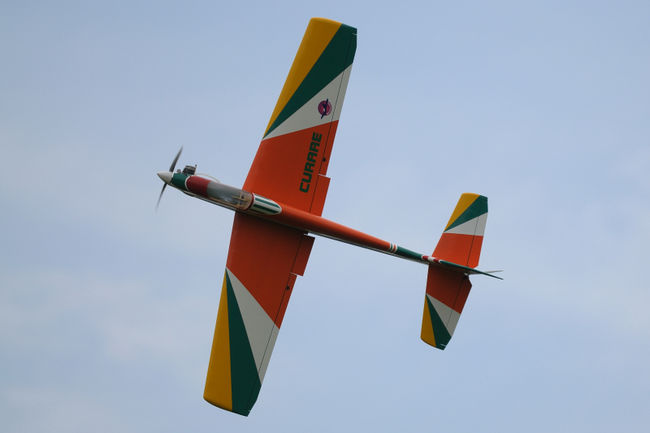
Modelsport Curare
Other ARTF Classic Aerobatic models that are available include the Hangar 9 Pheonix 7 and the Great Planes Dirty Birdy, two more excellent models from the period.
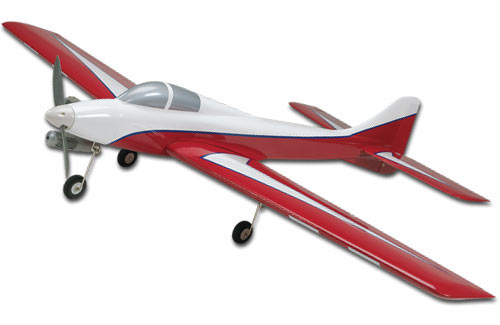
Moving even further back in time, we have the Kwik Fli series of designs from Phil Kraft, parallel chord wings and ‘box’ styled fuselage.
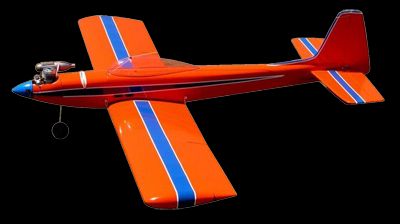
Phil Kraft's Kwik Fli III
The Slick Fli from the same designer offers a bit more of a building challenge but a more pleasing fuselage shape results. The Kwik Fli III is a another model available in an ARTF offering from Graupner this time. The Phil Kraft 2/3 size Kwik Fli (Flea Fli) originally intended for .19 sized engine makes a very good electric conversion using a 3S 2200 LiPo.

Martyn Kinder - Flea Fli
To complete this brief history lesson, there are 2 other models that should be mentioned. The first, Upset was designed by UK flyer Chris Olsen. This model was the result of several years development and included the classic Uproar and Upset designs.

Finally, the model that is recognised as the grandfather of the modern aerobatic design, Fred Dunn's classis Astro Hog. Although dated and uncompetitive compared with the models described above, this was the first truly aerobatic design and a worthy winner of the 1958 World Championships. The model is available as a plan from myhobbystore or as a kit from SIG
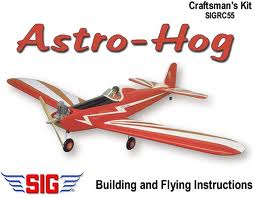
Fred Dunn's Astro Hog
This era seems to offer the greatest variation in model design and visiting the Trenton Flyers web site, will reveal a vast range of designs, photographs and build articles.
Roll your own?
The only problem with the ARTF approach is that builders would be denied the added advantage of producing their own airframe and having the pleasure and achievement of performing aerobatic manoeuvres with a model built with their own skills.
As with the Challenger, the F3A models of that period were of a fairly simple construction, particularly if constructed using a foam wing and tail, which reduces a lot of the build effort. The main criteria with any model, not just an F3A type is to build it straight and, a common comment, add lightness.
Plans are available from a number of sources and in the form of PDF files of some designs on the internet. Take a look, see which design takes your fancy and start building again. Let’s face it, those of a certain age will be re-living times gone by and those new to building will experience what many of us love the whole hobby for. Most clubs have traditional builders who would be more than happy to help others develop their skills.
Powering up!
The advent of classic F3A flying has brought modellers delving into cupboards and drawers to bring back to life the engines of yesteryear in order to add even more realism to their classic models. This has lead to some inflated prices being seen in classified ads and the various auction sites around.
Although this may seem the way to go, the whole idea is to experience the models that flew, the way they are powered is flexible and offers economical approaches.
Many of the so-called ‘sport’ engines available today are more powerful than some of those that were available at the time. At one of the Sleap fly-ins Jamie Cuff was flying a Chevron, originally designed as a 61-powered model, performing a very impressive range of manoeuvres. On landing, I asked Jamie what engine he was using and it turned out to be one of the very popular OS 55 AX engines! More than enough power and just as in the period we are talking about, available in any model shop you would care to walk into. Full circle!
Those later models that utilised tuned pipe equipped engines can call on the use of engines that use ‘61’ size crankcases but have been bored out to ‘91’ size. This means that adequate performance can obtained, without re-course to a tuned pipe, using a standard exhaust and yet, by propping the engine correctly, achieve low noise levels. This has been proved very effectively by Eddy Scott, using an OS 91 FX, with standard silencer, in Steve Dunning's Aztec design. The design is capable of performing all normal manoeuvres within the F3A schedules without high noise levels. Those that have seen the model flying have been suitably impressed. In the early days, the cross flow heads were well down on power compared to even the cheapest ‘sport’ engines available today. That means that even the cost conscious modeller can enjoy taking part and have more than enough power to perform the schedules of the day.
However, for those who wish to utilise modern brushless motors and LiPo power cells will be made just as welcome. The objective is to get as many of these wonderful designs in the air, with some low key competition, but primarily to enjoy ourselves.